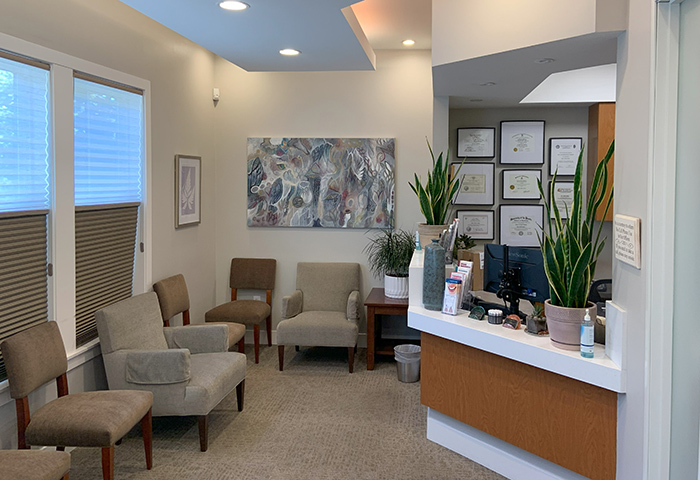
Welcome!
Your dentist has referred you to an endodontist. Endodontists are dental specialists who have advanced education and training in root canal therapy and other procedures involving the dental pulp. They are experienced in treating complicated cases, traumatic injuries and can usually save teeth, which would otherwise be lost.
After your endodontic care, you would need to return to your family dentist for the final restoration of the tooth. Your dentist then continues to oversee your dental care including regular check-ups and cleaning.
Your initial visit is for a consultation to evaluate and tailor care to your specific needs.
Please bring with you the following items to expedite your appointment:
1) This referral form
2) Any x-rays provided by your dentist
3) All insurance information
Also: Avoid pain medication 6 hours prior to your consult appointment.
Please call our office if you have had rheumatic fever, a heart murmur, artificial valves, artificial joints, or if you have any special needs or concerns. We look forward to assisting you.
Your First Visit
We start with a comprehensive examination to diagnose your dental condition. In consultation with your restorative dentist, we will determine if your tooth is a good candidate for endodontic therapy, endodontic retreatment, surgical retreatment or a dental implant and explain your treatment options. What sets us apart is our ability to do a comprehensive exam utilizing the most advanced imaging systems available today. We have invested in digital radiography which allows us to view your dental condition while reducing your x-ray exposure by 80%. We have had this technology since 1995 (one of the first dental offices in the Bay area) which had been continuously upgraded over the years. We also have the ability to do a 3-D scan of your tooth which can show detailed and valuable information that can help aid in the diagnostic process. We were the first endodontic office in the Bay Area to utilize this. Our system also has the lowest x-ray dose among all the current systems available. Given our long history with this technology we have developed a unique and advanced skill in interpreting these 3-D images.
The next step is to eliminate the diseased pulp and relieve your dental pain or infection. The injured pulp is removed and the root canal system is thoroughly cleansed and sealed. This therapy usually involves local anesthesia and may be completed in one or two visits depending on the treatment required. Success for this type of treatment occurs in about 90% of cases. We will inform you as soon as possible if we determine that your tooth is not suitable for treatment or the prognosis changes. Most patients return to their usual routine after treatment.
Generally, non-surgical treatment is all that is needed to save teeth with an injured pulp. Occasionally, this non-surgical procedure will not be sufficient to allow healing and we will recommend endodontic microsurgery. Endodontic microsurgery can be used to locate fractures or hidden canals that do not appear on x-rays, but still cause pain. Damaged root surfaces and surrounding bone may also be treated with this procedure. The most common microsurgical procedure used to save damaged teeth is an “apicoectomy” or “root-end resection.”
IF YOU HAVE AN APPOINTMENT PLEASE CLICK HERE TO BEGIN YOUR PATIENT REGISTRATION
